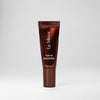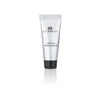Acne isn’t just an annoying rite of passage for teenagers. As we age, acne is an unwelcome gift that keeps on giving. ADULT acne can crop up due to topical products, hormones, environmental factors, and even stress. Acne is often described as a skin disease, but many factors influence and aggravate acne—at any age.
NOT JUST FOR TEENS
For young adults, acne can be triggered by hormones, heredity, and follicle issues. Dry, dead, and flaking skin can congest hair follicles. The situation is aggravated by an overproduction of sebum, resulting in microcomedones that lead to closed comedones or inflammatory lesions, which become a breeding ground for acne-causing bacteria.
For adults, stress and lifestyle can play a role in triggering acne breakouts. Other culprits include hormones from pregnancy and pre-menopause. Micronized makeup. Topical products that cause dryness, congest pores, and trigger ongoing inflammation. Plus, over-washing and over-exfoliating. All these factors can worsen acne conditions or lead to acne flare-ups. For men, beards or mustaches can aggravate clogged pores that lead to blemishes.
AN EASTERN TAKE ON ACNE
The western understanding of acne is that it is triggered primarily by bacteria and the excess production of pore-clogging oils. However, in Asian medicine, acne is believed to be the result of internal imbalance. For example, excess heat in the body tends to increase the acneic conditions on skin, as will internal congestion or stagnation. Traditional Chinese medicine uses specific combinations of Chinese herbs in a customized herbal therapy to help heal acne and restore normal skin function. Gua sha treatments can also help with younger, acne-prone skin by creating an anti-inflammatory response and restoring balance. Learn more about gua sha here.
ACNE ENEMIES & BREAKOUT SOLUTIONS
Be sure the ingredients in your skincare products are "acne enemies.” Check labels. Be on the lookout for these ingredients that help ward off breakouts and acne flare-ups.
- Bentonite and other types of clay soak up excess sebum and clarify congested pores.
- Are detoxifying masks your thing? Try the clays in Icy Revitalizing Mask.
- Cinnamon extract has antiseptic and anti-bacterial properties.
- Do you prefer a botanical approach to treating acne conditions? Find it in Exfoliating Cleansing Gel.
- Glycolic acid is an alpha hydroxy acid derived from sugar cane to refine uneven texture, clear pores, and promote cell regeneration.
- How does a pore-tightening micro-peel sound? Use 5% Glyco Polymer Solution.
- Mandelic acid is a very gentle alpha hydroxy acid derived from bitter almonds that can be used to treat acne.
- Need an exfoliating and acne-combating product that is gentle enough for sensitive skin? You can find it in Perfect Renewal exfoliating pads.
- Salicylic acid is a beta hydroxy acid often recommended as a go-to acne product. Derived from willow bark, Salicylic Acid is lipid soluble, which means it helps control oil production and clears congested pores, which is going to result in minimized pore size and a reduction in breakouts.
- Looking for a pore-clearing Cleanser? Find it in Exfoliating Cleansing Gel.
- Need a breakout solution? Try Beta Acid.
- How about a spot treatment? Check out A&E Corrector.
- Sulfur eliminates acne-causing bacteria, helps clear excess oil and surface skin debris, and decreases inflammation.
- Want to camouflage acne spots? Use A&E Corrector, featuring sulfur and cinnamon bark.
ZIT-ZAPPING BEAUTY TOOLS
Some beauty tools are being used today to effectively treat acne.
- LED blue light in the range of 405-420 nm helps kill acne-causing bacteria and calm inflammation.
- Experience it with DermaBlu.
- LED red light used at 660 nm helps promote skin recovery, reduce the appearance of acne scarring, and minimize skin inflammation.
- Power up your regimen with DermaRed.
- Ultrasonic exfoliating tools at 28,000 vibrations per second remove cellular build-up and wiggle out blackheads (not whiteheads) without damaging pores.
- For painless blackhead extractions, try Skin Perfecter.
BREAKOUT REPELLENTS
The key in managing acne-prone skin is to balance dryness and hydration. Don’t let skin get dried out, and don’t let pores get clogged with dead skin cells or makeup debris. Acne-prone skin must be kept moist, not from oils, but from a hydrating mist or spray-on mineral solution. To prevent and treat acne, here are the Top 10 Tried-And-True Tips, straight from professional estheticians.
- Remove make-up every night, because makeup remnants stuck in pores can lead to new blemishes.
- Wash your face every night—not just in the morning—to help skin renew as you sleep.
- Look for salicylic acid in skincare products to exfoliate, degrease, and declog pores.
- Don’t pick at your face or pop pimples, which can lead to infections and scarring.
- Don’t scrub your face, which can irritate skin and upset the healthy balance of natural oils.
- Hydrate your skin with a mineral-based toning spray to keep cells in a healthy, moist environment. Iso-Cell Recovery Solution and Iso-Rose Hydrating Mist are hydrating powerhouses for acne-prone skin.
- Use Hyaluronic Serum to keep your skin moist and to help reduce flaking and peeling from topical acne treatments.
- Use moisturizers WITHOUT pore-clogging waxes or butters, such as feather-light, non-pore-clogging Sheer Hydration.
- Use handheld ultrasonic Skin Perfecter to painlessly clear pores and vibrate out blackheads.
- Use handheld DermaBlu LED blue light tool to kill acne-causing bacteria.
 Skip to content
Skip to content




